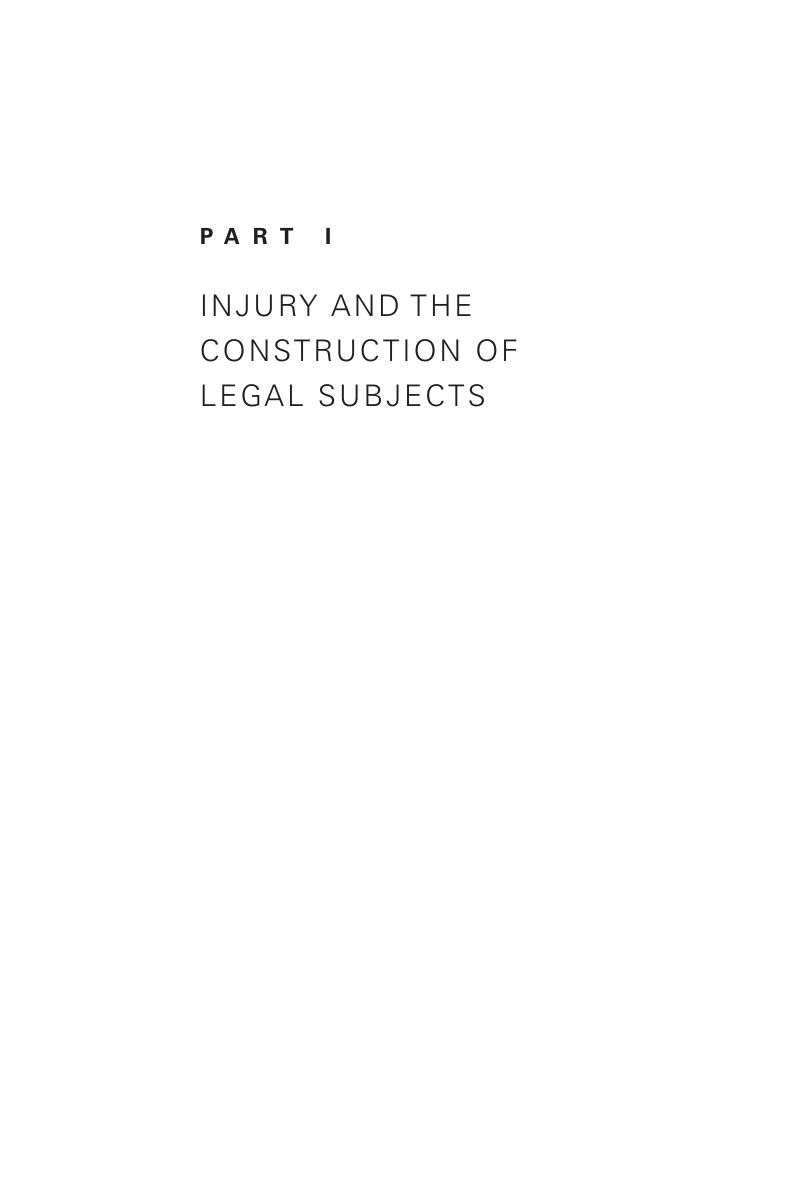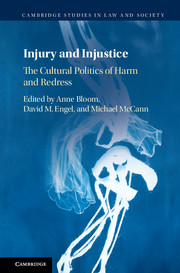Book contents
- Injury and Injustice
- Cambridge Studies in Law and Society
- Injury and Injustice
- Copyright page
- Contents
- Illustrations
- Contributors
- Acknowledgments
- Introduction
- Part I Injury and the Construction of Legal Subjects
- Part II Constructing Injury and Imagining Remedies
- Part III Inequality and/as Injury
- Conclusion
- Index
- Cambridge Studies in Law and Society
- References
Part I - Injury and the Construction of Legal Subjects
Published online by Cambridge University Press: 24 February 2018
- Injury and Injustice
- Cambridge Studies in Law and Society
- Injury and Injustice
- Copyright page
- Contents
- Illustrations
- Contributors
- Acknowledgments
- Introduction
- Part I Injury and the Construction of Legal Subjects
- Part II Constructing Injury and Imagining Remedies
- Part III Inequality and/as Injury
- Conclusion
- Index
- Cambridge Studies in Law and Society
- References
Summary

- Type
- Chapter
- Information
- Injury and InjusticeThe Cultural Politics of Harm and Redress, pp. 25 - 114Publisher: Cambridge University PressPrint publication year: 2018



